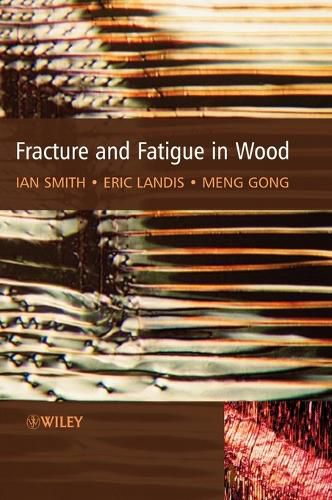Readings Newsletter
Become a Readings Member to make your shopping experience even easier.
Sign in or sign up for free!
You’re not far away from qualifying for FREE standard shipping within Australia
You’ve qualified for FREE standard shipping within Australia
The cart is loading…






Damage in wood is principally the result of fatigue. Fatigue is the process of progressive localised irreversible change in a material, and may culminate in cracks or complete fracture if conditions that initiated or propagated the process persist. Comprehensive understanding of fatigue and fracture in engineered wood components must be founded on a proper understanding of the damage processes. Although wood is the world’s most widely used structural material, whether measured by volume consumed or value of finished construction, its behaviour is not well understood even by people who have spent their careers studying it. What is known about failure processes comes almost entirely from empirical evidence collected for engineering purposes. Hypotheses about behaviour of wood are based on macroscopic observation of specimens during and following tests. With only limited resources and the need to obtain practical results quickly, the timber engineering research community has steered away from the scientific approach. Forestry practices are changing and are known to influence characteristics of wood cells therefore there is a need to periodically reassess the mechanical properties of visually graded lumber the blackbox approach. Fatigue and Fracture of Wood examines the above issues from a scientific point of view by drawing on the authors’ own research as well as previously published material. Unlike the empirical research, the book begins by examining growth of wood. It briefly examines its structure in relation to how trees grow, before assessing the fatigue and fracture of wood and discussing the scientific methods of modelling fatigue. Covers from macro to micro behaviour of wood Presents direct evidence of how wood fractures using Scanning Electron Microscopy The first book to present a physically correct model for fracture in wood Provides experimental proof of so-called memory in wood (i.e. dependence of fatigue behaviour on the loading sequence) Givse practical illustrations of how theories and models can be applied in practice An essential resource for wood scientists/engineers, timber-engineering practitioners, and graduate students studying wood and solid mechanics.
$9.00 standard shipping within Australia
FREE standard shipping within Australia for orders over $100.00
Express & International shipping calculated at checkout
Damage in wood is principally the result of fatigue. Fatigue is the process of progressive localised irreversible change in a material, and may culminate in cracks or complete fracture if conditions that initiated or propagated the process persist. Comprehensive understanding of fatigue and fracture in engineered wood components must be founded on a proper understanding of the damage processes. Although wood is the world’s most widely used structural material, whether measured by volume consumed or value of finished construction, its behaviour is not well understood even by people who have spent their careers studying it. What is known about failure processes comes almost entirely from empirical evidence collected for engineering purposes. Hypotheses about behaviour of wood are based on macroscopic observation of specimens during and following tests. With only limited resources and the need to obtain practical results quickly, the timber engineering research community has steered away from the scientific approach. Forestry practices are changing and are known to influence characteristics of wood cells therefore there is a need to periodically reassess the mechanical properties of visually graded lumber the blackbox approach. Fatigue and Fracture of Wood examines the above issues from a scientific point of view by drawing on the authors’ own research as well as previously published material. Unlike the empirical research, the book begins by examining growth of wood. It briefly examines its structure in relation to how trees grow, before assessing the fatigue and fracture of wood and discussing the scientific methods of modelling fatigue. Covers from macro to micro behaviour of wood Presents direct evidence of how wood fractures using Scanning Electron Microscopy The first book to present a physically correct model for fracture in wood Provides experimental proof of so-called memory in wood (i.e. dependence of fatigue behaviour on the loading sequence) Givse practical illustrations of how theories and models can be applied in practice An essential resource for wood scientists/engineers, timber-engineering practitioners, and graduate students studying wood and solid mechanics.